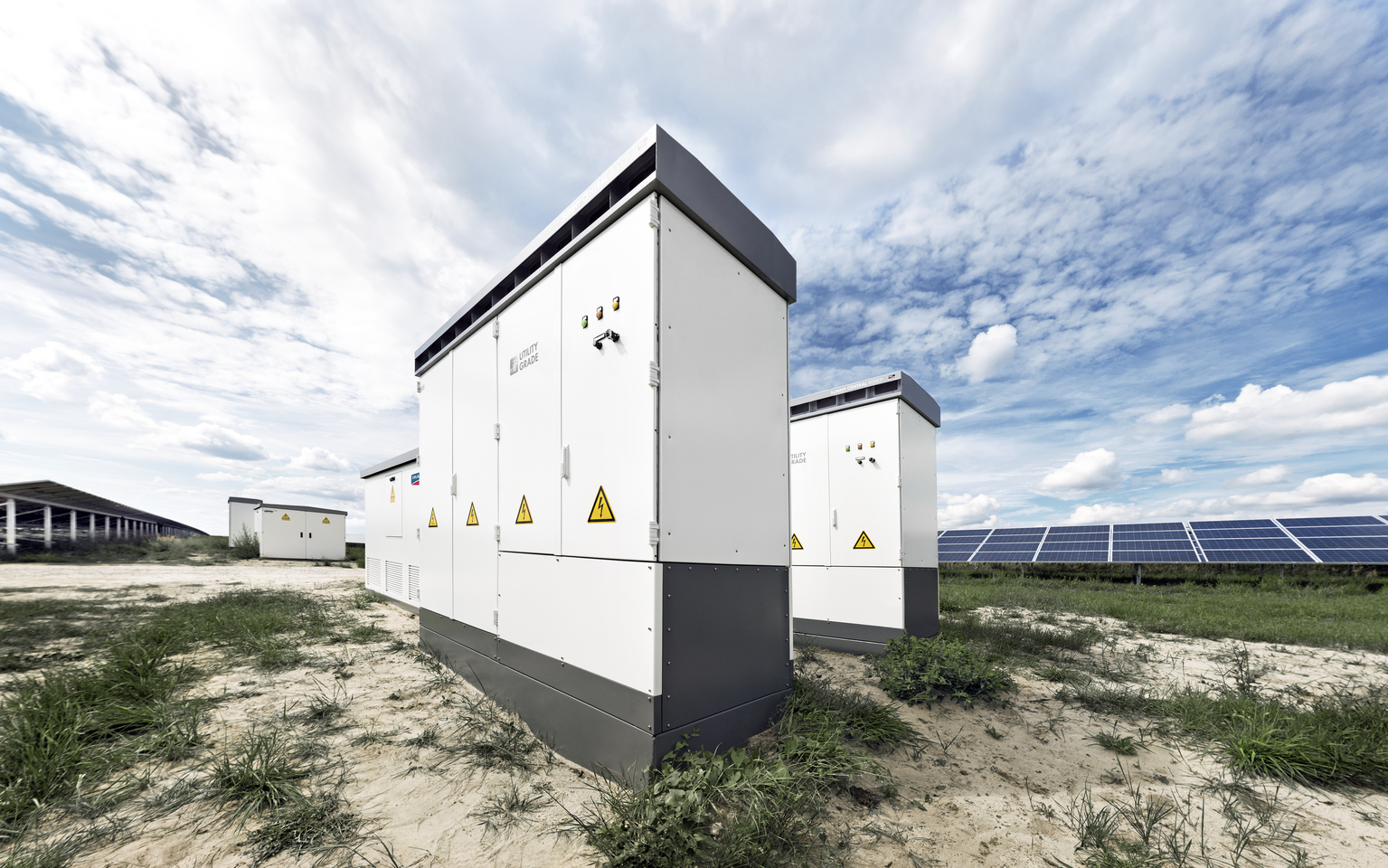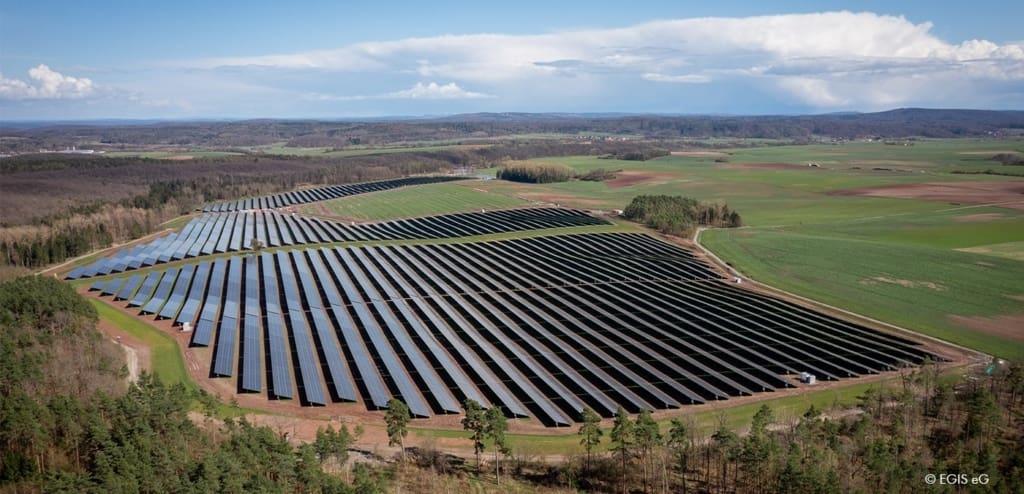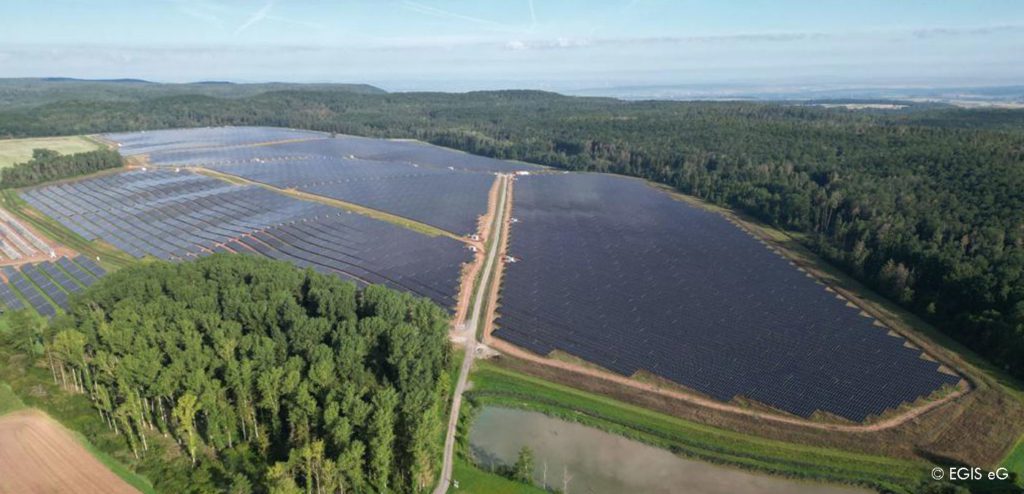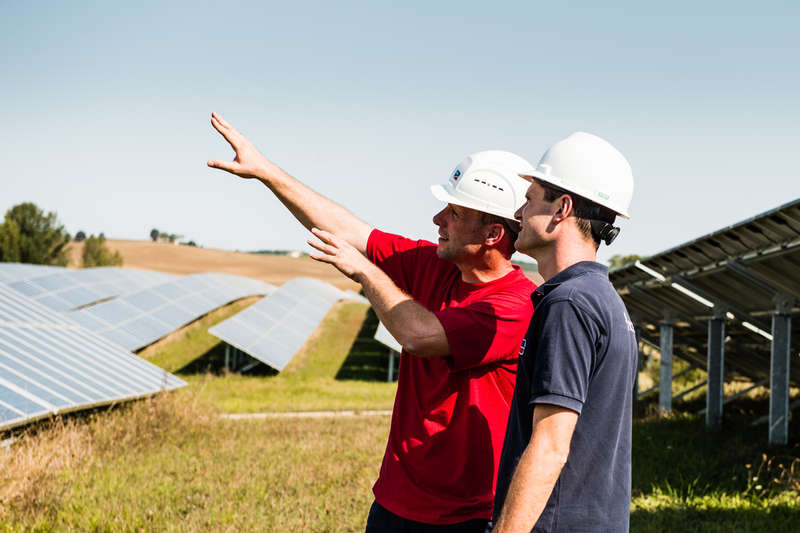PV Farms Instead of Power Outages

In January, Norbert Röttgen (Federal Minister for the Environment) remarked that “the more solar energy there is, the greater the load to the power distribution grid is.” This notion is cropping up more and more often in the media, despite the fact that it is a straight-out misconception. This is the general line of argumentation that is resorted to when the debate on costs runs up against a wall. And now is no exception. The truth of the matter is that the load on the power distribution grid becomes less, and not more with solar energy. For this reason, we need to continue to expand photovoltaics, and not halt it.
If Rösler (Federal Minister of Economy) and Röttgen have their way, as we all know, the current proposals to cut subsidies would remove large-scale ground-based photovoltaic plants from the subsidy program entirely. According to the ministers, expanding photovoltaics would only unduly tax the power distribution grid, yet actually the opposite holds true. Photovoltaics provides a decentralized method of supplying the distribution grid: Approximately 80 percent of the power is fed to the low-voltage grid and approximately 20 percent to the medium-voltage grid. What does this mean for grid integration of solar power?
Four misconceptions on solar power – The truths revealed
1. There is no reason to fear power outages: There are sufficient regulations in place to assure the stability of the medium-voltage grid.
Large-scale PV plants are normally connected to the medium-voltage grid. For a long time now, there have been regulations governing the fact that PV plants need to participate in stabilizing the power distribution grids. Regulating mechanisms called System Service Ordinances have been enacted in Germany. These call for voltage and frequency stabilization, reactive power provision by means of inverters, and grid-stabilizing energy provision in the event of a short circuit. Therefore, there is no need to fear problems such as power outages caused by overloaded networks, not even if the percentage of solar power increases.
2. No additional electricity lines: Solar power is generated locally and close to consumers.
What about the low-voltage grid? The grids in densely populated areas, in particular, are stable and well-established. Any further expansion to the networks would be necessary, if at all, in rural areas only. Even the addition of PV plants up until now has not noticeably affected power quality in the transmission grid. There is actually no need to transport large amounts of energy between the northern and southern parts of Germany, for example, due to the decentralized nature of generating solar energy locally. It means that, if any expansion work were to be required, it would be almost entirely concentrated in the distribution grid. It’s not likely that the general public would be hesitant about accepting the expansion needs. The situation would be different if the transmission grid, i.e., the large electricity lines, needed to be expanded. The only work that is required is mainly adding additional lines along existing ones.
3. There is a guaranteed power supply: Innovative technologies assure a projectable and safe electricity supply.
A persistent misconception is the assumption that the major fluctuations when generating solar and wind power cannot be managed. To put it more simply: Either there’s too much or too little electricity in the power distribution grid, making the supply fluctuate greatly and uncertain. In fact, today we already have innovative technologies that can intelligently manage the loads in the home, for example. The weather forecasts and even the varying unit costs of electricity are taken into account in the parameters. For example, your washing machine will automatically turn on someday soon when the market price of electricity is the cheapest. The self-consumption will lessen the load on the power distribution grid and the low prices will mean lower costs for PV plant operators. If you take the intermediate storage systems for solar energy into consideration, you can bridge the times when neither the sun shines nor the wind blows.
4. Prices do not rise because of solar energy: Photovoltaics covers expensive peak load power and acts as a cushion for prices.
In addition, solar energy ideally correlates with consumer peaks in the power distribution grid; it’s particularly suited to covering the peak load around noon-time. However, it’s this characteristic that causes justifiable protest calls from the major energy companies. Why? Because photovoltaics rattles the very foundation of their business. PV plants were able to cover a substantial percentage of the peak load during the day, especially in spring and summer, in 2011. In turn, they pulled ahead of the expensive conventional plants for peak load power and drove the prices on the energy markets down.
You could ask yourself, why wouldn’t the major energy companies want to invest more in renewable energies? Probably because there is no acceptable solution for integrating the conventional power plants, which are difficult to regulate. But it wouldn’t help much anyway: If the major energy companies don’t change their business models, they’ll just miss the boat for the “new” energy industry.
The cuts in subsidies won’t stop the advance of solar power…
In short: The current plans to cut subsidies for solar energy will virtually halt the expansion of photovoltaics and slow down the energy revolution. However, the final breakthrough of solar energy cannot be halted entirely. The prices for a PV plant have dropped nearly 60(!) percent since 2006, and they will continue to fall thanks to technological innovations. People will soon be generating a good portion of their energy needs themselves. If you invest in a PV plant with integrated battery storage, you’ll be better off in a few years than someone who takes their electricity from the socket-outlet. This democratization of the energy supply would also, if nothing else, reflect the high level of acceptance that society places on solar energy, for example, through the people’s participation in PV farms.
… – but destroy jobs and endanger Germany’s competitive edge in technology.
And it becomes even more tragic as the financial livelihood of thousands of specialist companies will be jeopardized and the losses in the large-scale PV plant business could reach the millions. Furthermore, the current slashing of the subsidies hinders a development that could not only create more jobs for qualified people domestically through Germany’s leading edge in the sector, it could also guarantee that Germany’s climate protection goals are attained. Obviously, we cannot attain this for nothing. However, the fossil fuels were not and cannot do this either. Notwithstanding, manufacturers in Asia are in the starting blocks. These manufacturers may be the only ones in the race who will benefit from the precipitated cuts in subsidies.




Feel free to contribute!